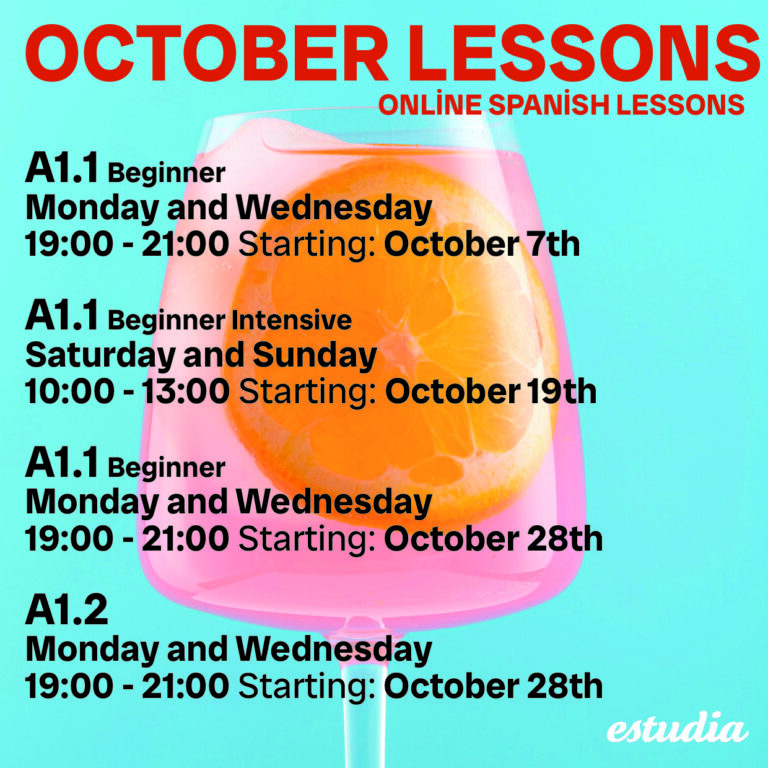Spanish gastronomy reflects its cultural, geographical, and historical diversity. From the cold northern mountains to the warm southern coasts, each region offers dishes that have been passed down through generations, adapting to the times while preserving their essence. Beyond tortilla de patatas or the famous tapas, Spain boasts a culinary tradition that many have yet to fully discover.
If you’re planning a trip to Spain to enjoy its gastronomy, why not combine it with an immersive language course? At ESTUDiA, our online Spanish school, we help you find the ideal destination in Spain to learn the language while discovering its cultural and culinary richness. Join us on this journey through the 10 most representative dishes of Spain!
10. Migas – Extremadura
Migas, as the name suggests, originate from the reuse of stale bread crumbs, an essential resource for humble families in Extremadura. This simple yet creative dish transforms basic ingredients into a culinary delight. The traditional preparation involves moistening the stale bread, then sautéing it in a pan with garlic, pimentón de La Vera, and fat, usually pork-based. Migas are often enriched with chorizo, bacon, or fried peppers, creating a comforting and surprising flavor combination. Today, this dish is served both in rural homes and high-end restaurants, where it has been reimagined to delight diners.
9. Bacalao a la vizcaína – Basque Country
Bacalao a la vizcaína is one of the most iconic dishes from the Basque Country and a perfect example of the region’s rich culinary tradition. The dish is based on a Vizcaína sauce made with choricero peppers, onion, garlic, and a touch of olive oil. It showcases how Basque cuisine elevates simple ingredients through traditional techniques. The cod is gently cooked to retain its juiciness and bathed in this rich and flavorful sauce, creating a perfect balance of tastes. In the Basque Country, enjoying this dish connects you with the deep roots of its gastronomic culture.
8. Papas arrugadas with mojo – Canary Islands
The Canary Islands, with their unique climate and volcanic soil, produce native ingredients that form the basis of dishes like papas arrugadas. These small potatoes, known as papas bonitas, are grown in volcanic soil, giving them a distinctive flavor. The preparation is as simple as it is delicious: the potatoes are boiled in heavily salted water until their skins wrinkle and are served with mojo, a sauce that comes in red and green varieties depending on the ingredients. Mojo picón(red) adds a spicy touch with peppers and cumin, while the green version, made with cilantro, is fresher. This dish pairs perfectly with fish and meats but is also enjoyed as an appetizer.
7. Fabada asturiana – Asturias
Asturias is synonymous with green landscapes, cider, and, of course, fabada. This hearty stew is a true tribute to mountain gastronomy, where quality ingredients and time are essential. The Asturian-grown fabes are the stars of this recipe. Their creamy texture combines with the intense flavors of chorizo, blood sausage, and pork belly, creating a dish that warms even the coldest days. Though its origins are humble, fabada asturiana has become a symbol of regional cuisine and is enjoyed across Spain.
6. Gazpacho – Andalusia
Gazpacho is more than a cold soup; it’s a symbol of the Mediterranean diet and resourcefulness. Ingredients like tomato, pepper, and cucumber are staples of Andalusian gardens. While today gazpacho is associated with hot summer days, its origins date back to a simpler mix of bread, garlic, and vinegar made by peasants. The arrival of tomatoes from the Americas transformed the dish into what we know today. There are many variations, from the traditional recipe to modern twists with fruits like watermelon or strawberries, but the classic version remains the favorite.
5. Pulpo a feira – Galicia
Pulpo a feira represents the essence of Galicia: fresh ingredients and simple preparation that highlights their flavor. The octopus is slowly cooked in copper pots until it reaches the perfect texture, then served with coarse salt, paprika (sweet or spicy), and a generous drizzle of olive oil. Its origins trace back to rural fairs, where octopus was prepared in large quantities to feed attendees. Today, it’s an essential dish for any visit to Galicia and a true homage to its seafaring tradition.
4. Calçots with romesco sauce – Catalonia
Calçots are tender onions typical of Catalonia, roasted over embers and served with a delicious romesco sauce. This dish is the centerpiece of calçotadas, traditional gastronomic gatherings held mainly in winter. Eating calçots is a unique experience: you peel them with your hands, dip them in the sauce, and eat them by lifting them with your fingers. The romesco sauce, made with almonds, hazelnuts, tomatoes, and peppers, perfectly complements the smoky flavor of the calçots. This tradition is more than a meal; it’s a celebration that brings friends and family together around the fire.
3. Trucha a la navarra – Navarre
Trucha a la navarra is a simple yet delicious dish that highlights local ingredients. This freshwater fish, typical of the region’s cool streams, is stuffed with serrano ham and lightly fried in olive oil. The contrast between the trout’s delicate flavor and the salty touch of the ham makes this dish unique. Though its preparation is modest, trucha a la navarraexemplifies how high-quality ingredients can turn a recipe into a true delicacy.
2. Roasted suckling pig – Castile and León
The roasted suckling pig from Segovia is more than a dish; it’s an experience. Prepared in wood-fired ovens with just salt and water, its meat is so tender that it can be cut with a plate. This cooking method, passed down through generations, ensures a perfect balance of texture and flavor. Suckling pig takes center stage in celebrations and family gatherings, symbolizing Castilian hospitality.
1. Paella – Valencian Community
Paella is Spain’s most iconic dish, though few people know its authentic version. Originating in Valencia’s fields, this recipe includes rice, chicken, rabbit, green beans, garrofó, and saffron. Cooked in a paellera over a wood fire, paella is distinguished by the socarrat, the crispy layer of rice at the bottom that is a true delicacy. Its fame has inspired countless variations, but traditional Valencian paella remains the crown jewel.
Spanish cuisine reflects its history, landscapes, and people. Each dish tells a unique story that goes beyond flavors, connecting us to the traditions and creativity of those who prepare them.
If reading this article makes you feel Spain calling, at ESTUDiA, we can help you plan your adventure. As experts in Spanish teaching and immersion courses, you’ll not only learn the language but also live the full cultural experience, tasting these dishes in their places of origin. Which of these dishes is your favorite, or which one would you dare to prepare? Spanish gastronomy is ready to win you over!






